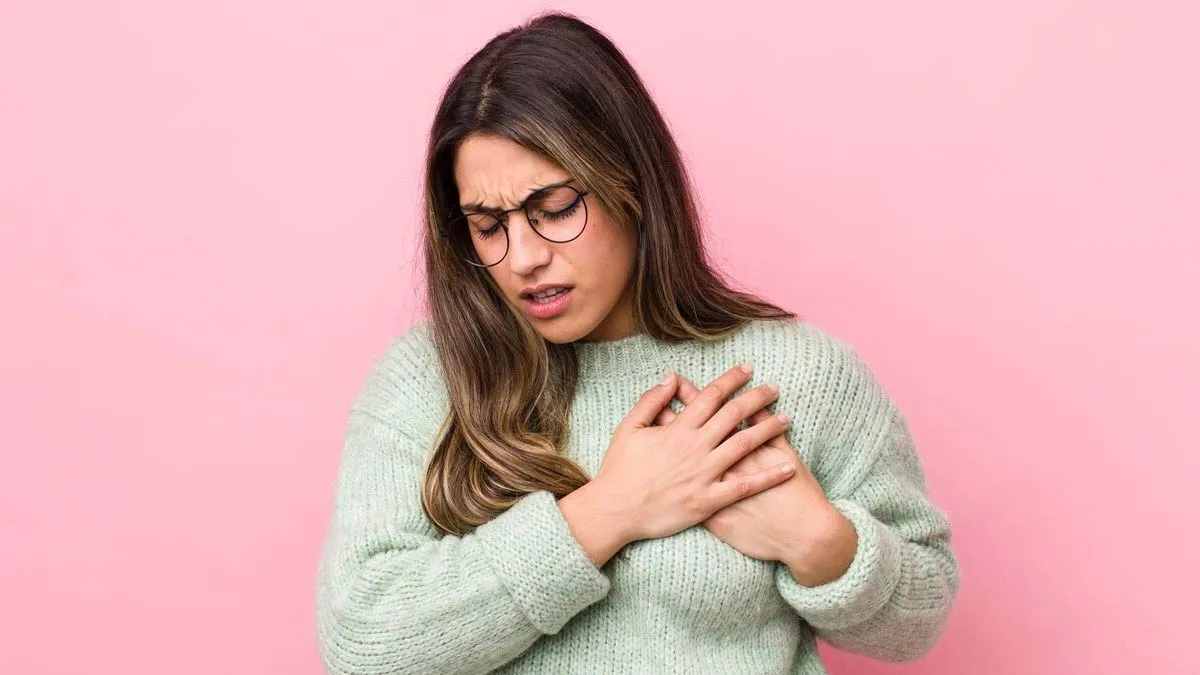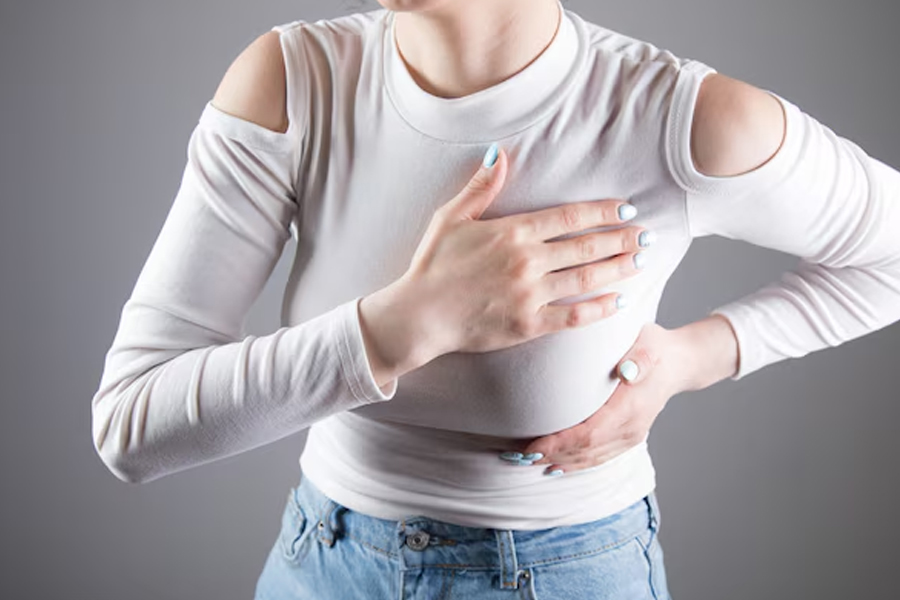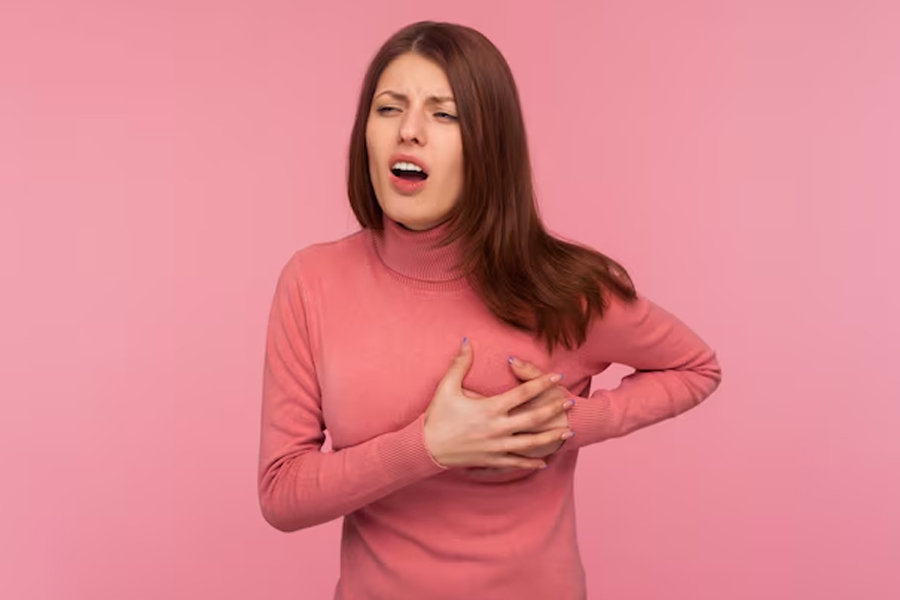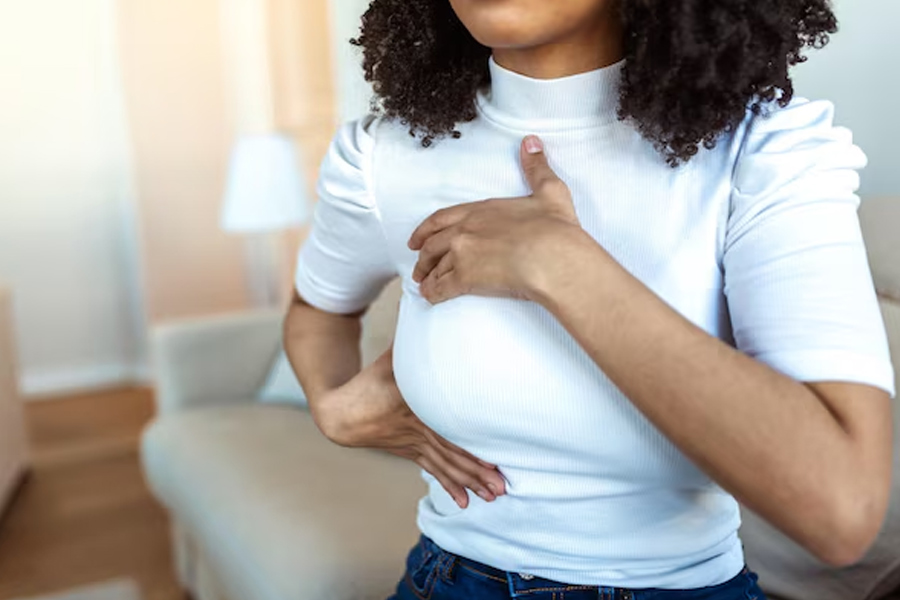
Breast pain is usually harmless, with many experiencing it during or before menstruation. Hormonal changes have a major role to play in causing breast soreness in women; however, many other factors can lead to it. If you specifically have localised pain in your left breast, it could raise alarms. However, instead of panicking, it is best to consult a doctor and get screening to rule out serious conditions.
Table of Content:-
In an interaction with the OnlyMyHealth team, Dr Lakhan Kashyap, Consultant—Medical Oncology, Manipal Hospital, Baner, Pune, not only lists some of the common causes of left breast pain but also helps differentiate between them. Additionally, she shares some useful remedies and treatment options to manage the pain.
Also Read: Do Your Breasts Hurt? These Could Be The Reasons
Most Common Causes Of Left Breast Pain

Breast pain, or mastalgia, is mostly benign, says Dr Kashyap.
According to hims, hormonal fluctuations, particularly during menstruation, pregnancy, or menopause, can lead to cyclical breast tenderness. Non-cyclical pain may result from musculoskeletal issues such as costochondritis, which is the inflammation of rib cartilage, he adds.
Additionally, fibrocystic breast changes, characterised by lumpy or dense breast tissue, can cause discomfort. It is a benign condition that occurs due to thickening of breast tissue, fluid-filled cysts, and hormonal stimulation during menstruation.
Other contributing factors include ill-fitting bras, excessive caffeine intake, and high-fat diets. Trauma or strain in the chest muscles, particularly from exercise, may also contribute to localised breast pain.
Some women can also develop infections like mastitis, which can also lead to breast discomfort—although they're more common in breastfeeding women, says Dr Kashyap.
He further adds that while left-sided breast pain can sometimes be attributed to heart-related issues, it is essential to differentiate between musculoskeletal and cardiac causes. Consulting a healthcare professional is advisable when pain is persistent or associated with other concerning symptoms.
When Does Left Breast Pain Mean Something Serious?

Although many painful breast instances are benign, some warning indications call for additional testing.
Dr Kashyap emphasises that a medical evaluation is essential for pain that is persistent, worsening, or localised without a clear cause.
Signs of an underlying issue may include a lump, skin changes such as dimpling, redness, or thickening, and unexplained nipple discharge, especially if bloody.
Non-cyclical breast pain that doesn’t subside over time or is accompanied by warmth or swelling may indicate an infection or inflammatory breast disease.
One must also watch out for inflammatory breast cancer, which can cause chronic pain, skin redness, and swelling, even though breast cancer is not a prevalent cause of pain. Moreover, chest pain that travels to the left arm, jaw, or back should be assessed immediately because it may be a sign of a cardiac condition rather than a breast-related one, especially if it is accompanied by dizziness or shortness of breath.
How To Manage Persistent Breast Pain?

Breast pain can often be managed with a combination of lifestyle adjustments, home remedies, and medical treatments. According to Dr Kashyap, here are some key strategies:
- Apply warm or cold compresses, as it helps reduce discomfort and inflammation.
- Take Over-The-Counter (OTC) medications that provide relief.
- Wear a well-fitted bra to minimise strain on breast tissue.
- Reduce caffeine and fat intake.
- Use evening primrose oil and vitamin E for cyclical breast pain, though their effectiveness varies.
- Hormonal therapy for severe or persistent pain
- If pain is caused by an infection, antibiotics may be necessary.
- Regular self-exams and clinical evaluations for proper diagnosis and management
- Seeking medical advice is essential for persistent or worsening pain to rule out any underlying conditions.
Conclusion
Pain in the breast can be caused by many factors. Although it is mostly benign, knowing the underlying cause helps determine the right course of treatment. From hormonal changes to an infection to a more serious condition like breast cancer, breast pain can have several causes. Consulting a doctor and getting proper screenings can help rule out the most concerning issues. Temporary breast pain is usually not alarming. However, if the pain is persistent, get necessary checkups.
Also watch this video
How we keep this article up to date:
We work with experts and keep a close eye on the latest in health and wellness. Whenever there is a new research or helpful information, we update our articles with accurate and useful advice.
Current Version